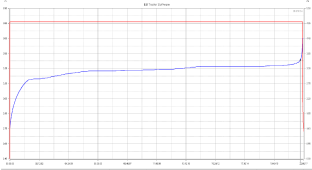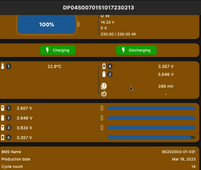Great Dane
Human on planet earth
Hi there
I recently bought a 12v Lifepo 100 Ah battery from Basengreen EU warehouse. This thing is giving me a headache.

The problem is that I can´t charge the battery without getting a cell overvoltage shutdown.
When cell 1 gets around 3.480V it runs of, and soon after the bms shuts down to protect the cells from over charging.

I´am using a Victron 100/50 solar charger and using Victrons own Lifepo4 preset as a basis. I have tried several different
settings with the charger and the bms - all with the same results. I mean - how hard should it be to charge a simple battery?
I should be able to charge all 4 cells to around 3.65V, and without any cell overvoltage shutdown - no?
I reached out to Basengreen with my problem. This is their answers:
"The BMS will shut down because one cell will rise to 3.65V and the other cells will still be at 3.45V, but the battery will be fully charged."
"According to the screenshot you provided, the SOC of the battery is 100%, and the battery cell has reached the static full voltage, indicating
that the battery has been fully charged.
The voltage difference of cells is caused by the fact that some cells have reached the static full voltage, but they are still charging at this time,
and the voltage of some cells will suddenly rise (such as the cell 1 in your attachment), resulting in the voltage difference.
This is the characteristic of lithium iron phosphate.
If the battery is in static state (no charge, no discharge, stand for 6-7 hours), the pressure difference of the battery will not be more than 20mV.
Overall, this is a normal phenomenon."
So "Overall, this is a normal phenomenon" ?
Seems to me that these cells are not properly balanced?
The battery have a resting voltage (2 days after a full charge) at 13.32V is that not a little low?
I do not own a capacity tester, so I can´t comment on that.
So what do you guys think?
Thanks.
Settings (tried several different ones):
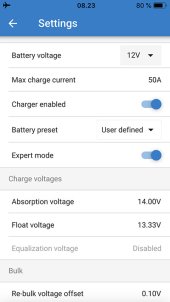
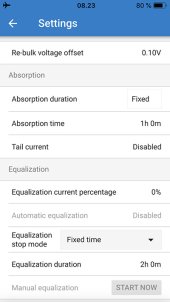
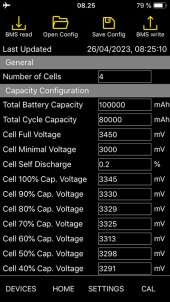

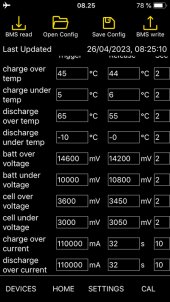
I recently bought a 12v Lifepo 100 Ah battery from Basengreen EU warehouse. This thing is giving me a headache.

The problem is that I can´t charge the battery without getting a cell overvoltage shutdown.
When cell 1 gets around 3.480V it runs of, and soon after the bms shuts down to protect the cells from over charging.

I´am using a Victron 100/50 solar charger and using Victrons own Lifepo4 preset as a basis. I have tried several different
settings with the charger and the bms - all with the same results. I mean - how hard should it be to charge a simple battery?
I should be able to charge all 4 cells to around 3.65V, and without any cell overvoltage shutdown - no?
I reached out to Basengreen with my problem. This is their answers:
"The BMS will shut down because one cell will rise to 3.65V and the other cells will still be at 3.45V, but the battery will be fully charged."
"According to the screenshot you provided, the SOC of the battery is 100%, and the battery cell has reached the static full voltage, indicating
that the battery has been fully charged.
The voltage difference of cells is caused by the fact that some cells have reached the static full voltage, but they are still charging at this time,
and the voltage of some cells will suddenly rise (such as the cell 1 in your attachment), resulting in the voltage difference.
This is the characteristic of lithium iron phosphate.
If the battery is in static state (no charge, no discharge, stand for 6-7 hours), the pressure difference of the battery will not be more than 20mV.
Overall, this is a normal phenomenon."
So "Overall, this is a normal phenomenon" ?
Seems to me that these cells are not properly balanced?
The battery have a resting voltage (2 days after a full charge) at 13.32V is that not a little low?
I do not own a capacity tester, so I can´t comment on that.
So what do you guys think?
Thanks.
Settings (tried several different ones):









